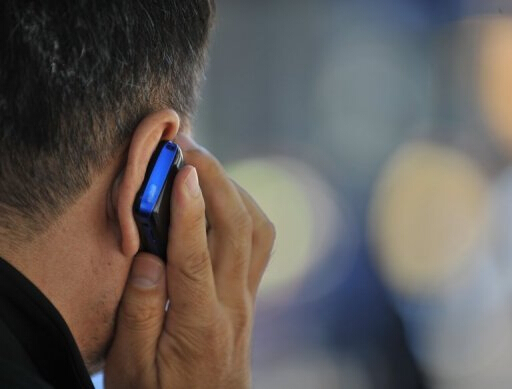
中国科技网5月12日报道(张微 编译)根据发表在开放获取期刊《微生物》上的一项小规模研究,从一个人的个人物品,如鞋和手机上发现的微生物“特征”可以用来确定他们之前的所处的位置,并追踪他们的活动。
通过我们接触的对象,人体皮肤上的细菌在生成我们的家、办公室医院和城市的微生物生态中发挥着重要作用。研究人类与他们所处环境的微生物交换在取证方面具有潜在的应用价值,因为在个人物品中发现的微生物特征可以用来甄别刑事调查中的嫌疑人。
研究报告的作者,美国芝加哥大学和阿尔贡国家实验室的Simon Lax说:“人类的微生物特征已经用于与他们接触的对象相匹配,如计算机键盘。现在我们感兴趣的是,这些微生物的相互作用如何随时间发生变化,以及它们是否可以用于追踪一个人的活动。我们发现即使从自己的客厅到朋友家的客厅都会导致个人物品上微生物群落结构的变化。
在这项研究中,两个研究参与者在两天所有醒着的时间里,使用无菌棉签对他们手机的正反两面、鞋底和他们脚下的地板进行了采样。这些棉签随后进行分析,以确定在每个时点上细菌群落的变化。
研究人员发现,这两天的每个位置上,鞋底与地板上的微生物群落变化非常相似。这表明,地板上的微生物群落对鞋底的微生物有着强大而直接的影响。
作者说,他们惊讶于参与者所到之处鞋底的微生物特征竟然这么明显而且独特。这进一步证实了他们仅凭参与者样本就能识别出每个参与者的计算机学习模型是成功的。
根据他们的研究结果,不太可能用手机来追踪一个人最近的活动,因为手机表面的微生物群落持续而快速地变化。
在进一步的研究中,89名参与者被随机挑选参加三个不同的学术会议,并被告知从他们的鞋子和手机上进行采样。
研究人员发现,根据参与者采样的三个不同会议的地理位置,鞋子和手机上的微生物群落的“特征”可以分为不同的组。
结果表明,根据表面类型,微生物群落显示出独特的结构和组成,可以识别人与哪些表面和地理位置发生过联系。
Simon Lax说:“细菌取证是一个新兴的研究领域,我们还需要更多的研究来更好地理解其潜在价值。目前的研究只是一个小规模的试点,因此这类研究的重点应当放在个体数量上,看我们是够能够达到人与物高精度的匹配。”
英文原文
Bacterial forensics: Tracing a suspect from the microbes on their shoes
The microbial 'signatures' found on an individual's personal items, such as their shoes and cell phone, could be used to determine their previous location and trace their movements, according to a small pilot study published in the open access journal Microbiome.
Bacteria found on human skin plays a role in shaping the microbial ecology of our homes, offices, hospitals and cities, through the objects we touch. Studying this microbial exchange between humans and their environment has potential applications in forensics, as microbial signatures found on personal items could be used to identify suspects in criminal investigations.
Study author Simon Lax of Argonne National Laboratory and University of Chicago, USA, said: "Human microbial signatures have already been used to match individuals to objects they've interacted with, such as computer keyboards. Now we're interested in seeing how these microbial interactions change over time, and whether they could be used to track an individual's movements. We found that even moving from one's own living room to a friend's living room leads to a highly detectable shift in microbial community structure on an individual's personal items."
In the study, two participants used sterile swabs to sample the front and back of their cell phones, the soles of their shoes and the floor beneath them, every waking hour over a two-day period. The swabs were later analyzed to determine the communities of bacteria present at each point.
Between each location over the two days, the researchers found that changes in the shoe microbial communities closely resembled those that were seen in the floor microbial communities. This suggests a strong and immediate impact from the floor microbial community on the individual's shoes.
The authors say they were surprised at how strong and distinct the shoe microbial signatures were in each location visited by the participant. This was further demonstrated with the success of their computer learning models in being able to identify each participant based solely on their samples.
According to their results, it is less likely that cell phones could be used to track a person's recent movements, due to the constant and rapid turnover of the microbial community on its surface.
A further 89 participants were randomly selected from attendees at three different scientific conferences and asked to donate samples taken from their shoes and phones.
The researchers found that the 'signature' of microbial communities, found on shoes and cell phones, could be clustered into distinct groups according to the geographic locations of the three separate conferences from where they were sampled.
The results therefore suggest that microbial communities show unique structure and composition based on surface type, the identity of the person interacting with the surface and geographic location.
Simon Lax said: "Microbial forensics is an emerging field and many more studies are needed to better understand its potential utility. This current study is a small pilot, and so a major priority will be scaling up the number of individuals in these sorts of studies, and seeing if we're still able to match people to objects with high precision."
 设为首页
设为首页  欢迎访问许昌市科学技术情报研究所
欢迎访问许昌市科学技术情报研究所 设为首页
设为首页  欢迎访问许昌市科学技术情报研究所
欢迎访问许昌市科学技术情报研究所
 您现在的位置: 许昌市科学技术情报研究所 > 科普知识 > 正文
您现在的位置: 许昌市科学技术情报研究所 > 科普知识 > 正文